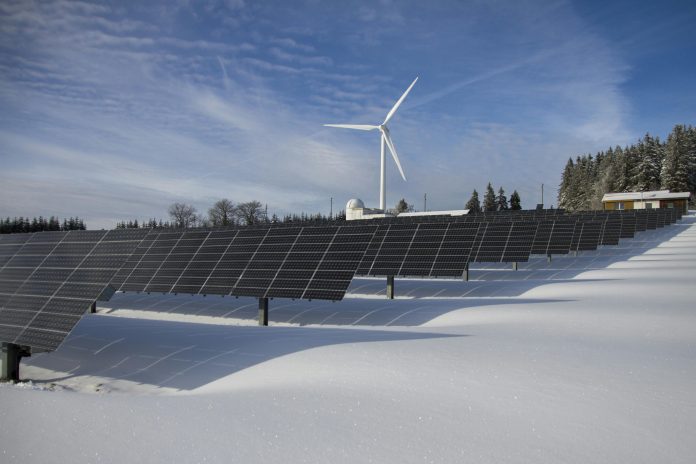The International Energy Agency (IEA) has released its flagship World Energy Outlook 2025 report, offering a sobering assessment of the world’s accelerating demand for electricity and the complex web of risks reshaping global energy security. The report projects that global electricity demand will grow far faster than earlier estimates, fueled by the electrification of transport and industry, the surging needs of data centers and artificial intelligence, and expanding demand in emerging economies across Asia, Africa, and Latin America.
At the center of the analysis is a stark message: while the transition to cleaner energy continues, progress remains uneven and vulnerable to geopolitical, technological, and infrastructural bottlenecks. The IEA warns that energy diversification and international cooperation must accelerate to avoid a new era of energy insecurity, one that stretches far beyond oil and gas to include electricity grids, critical minerals, and digital infrastructure.
The World Energy Outlook 2025 outlines three core scenarios that model different pathways for the global energy system, none of which are forecasts. Each explores how policy choices and investment strategies could shape energy affordability, emissions, and security through mid-century. Across all scenarios, one trend dominates: electricity demand grows at a pace never seen before, with global investment in electrification now exceeding oil and gas spending for the first time in history.
The IEA estimates that global investment in data centers alone will reach $580 billion in 2025, surpassing the $540 billion allocated to oil supply. This shift marks what the report calls the arrival of the “Age of Electricity.” Electricity now powers over 40% of global economic activity yet still accounts for only about 20% of total final energy use, underscoring both its centrality and the scale of expansion still required.
While renewables, led by solar photovoltaics, continue to dominate new generation capacity, the report warns that infrastructure gaps are emerging as a major vulnerability. Since 2015, global investment in electricity generation has increased by nearly 70%, but spending on transmission and distribution grids has grown at less than half that rate. Without massive expansion in grid infrastructure and storage, the IEA cautions, the benefits of renewable growth could be constrained by network bottlenecks and volatility.
The report also highlights the mounting risks in critical mineral supply chains, noting that a single country currently refines about 70% of all energy-related strategic minerals, including nickel and cobalt. These materials are indispensable for power grids, batteries, and electric vehicles, and increasingly for AI systems, aerospace, and defense industries. The IEA calls for urgent diversification to prevent mineral concentration from becoming the next frontier of energy insecurity.
The Africa continent is projected to account for a rising share of future energy demand, driven by industrialization, urbanization, and efforts to expand energy access. About 730 million people still live without electricity, and nearly 2 billion depend on unsafe cooking methods. The IEA’s new access scenario maps a pathway to achieve universal electrification by 2035 and clean cooking for all by 2040, identifying liquid petroleum gas (LPG) and decentralized renewables as key enablers.
Africa’s solar potential stands out in the report’s geographic analysis. By 2035, nearly 80% of global energy consumption growth is expected to occur in regions with high-quality solar irradiance, many of them across Africa’s Sahel, East, and Southern regions. However, unlocking this potential will require major investments in grids, financing frameworks, and stable policy environments.
The report also notes a global resurgence in nuclear power, projecting at least a one-third increase in capacity by 2035, driven by both traditional plants and small modular reactors. For countries like South Africa, Ghana, and Kenya, which are exploring or expanding nuclear programs, this could signal a new phase in the continent’s low-carbon energy diversification, provided safety, cost, and waste management challenges are adequately addressed.
Short-term oil and gas markets, meanwhile, remain fragile but well supplied. The IEA expects oil prices to hover around $60–$65 per barrel as new supply, particularly from the United States and Qatar, offsets geopolitical instability. Liquefied natural gas (LNG) capacity is set to increase by 50% by 2030, with around 300 billion cubic meters of new annual export capacity coming online. However, the report warns that both markets remain exposed to geopolitical risks and sudden demand rebounds.
Despite the breadth of its scenarios, the IEA issues a clear warning: the world remains off track to meet its climate goals. Even under the most ambitious emissions-reduction pathway, global warming temporarily surpasses 1.5°C before declining later in the century. The report calls for intensified global cooperation, not only to decarbonize but also to strengthen resilience against climate-linked disruptions. In 2023 alone, more than 200 million households experienced energy interruptions due to weather-related damage or cyberattacks, with transmission grids accounting for 85% of incidents.
As the global energy map shifts toward electrification and digitalization, the World Energy Outlook 2025 presents both a warning and a roadmap. It is a reminder for African countries that the energy transition is no longer a distant debate; it is a structural economic shift demanding investment, innovation, and strategic foresight.
Engage with us on LinkedIn: Africa Sustainability Matters






